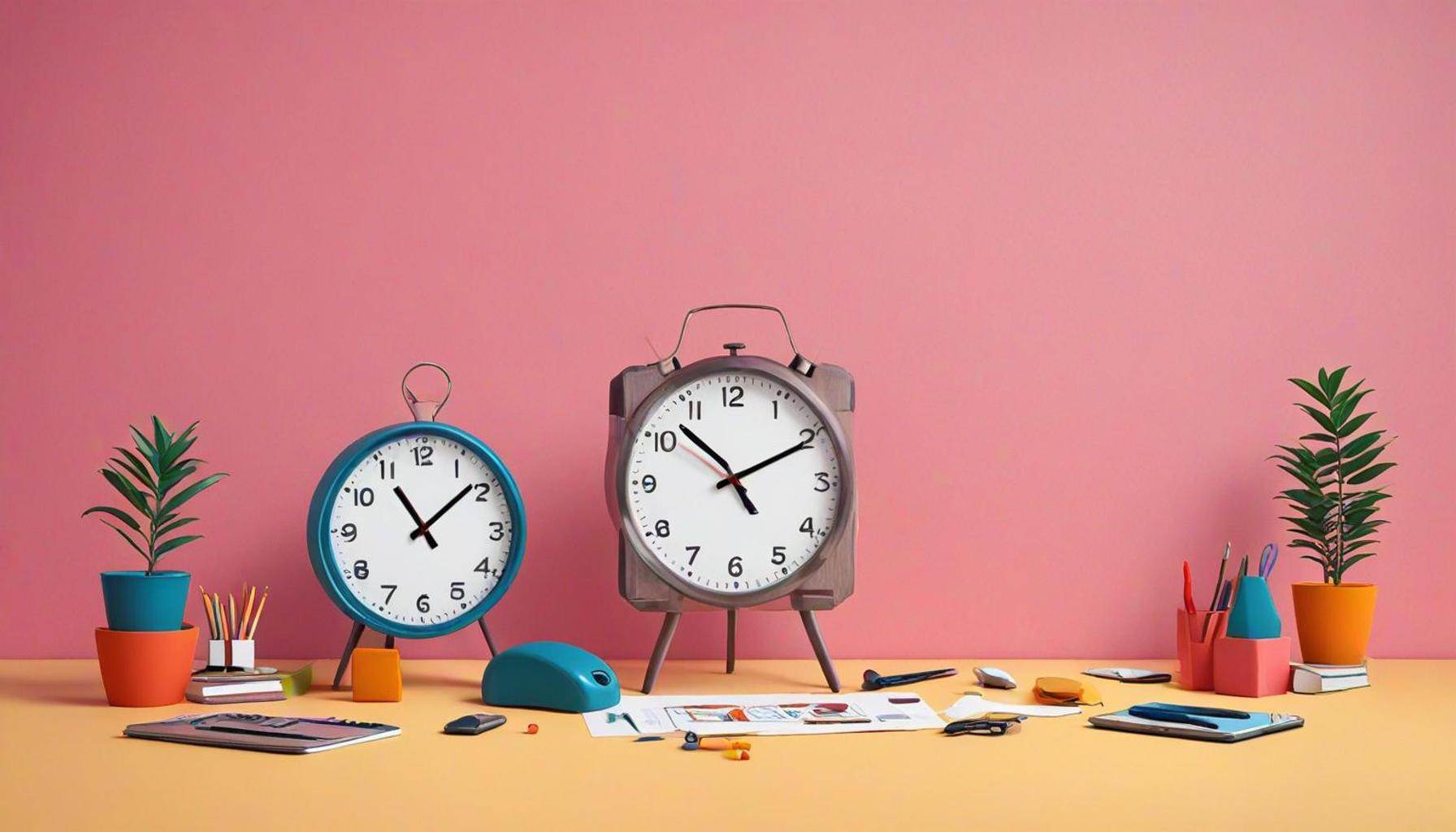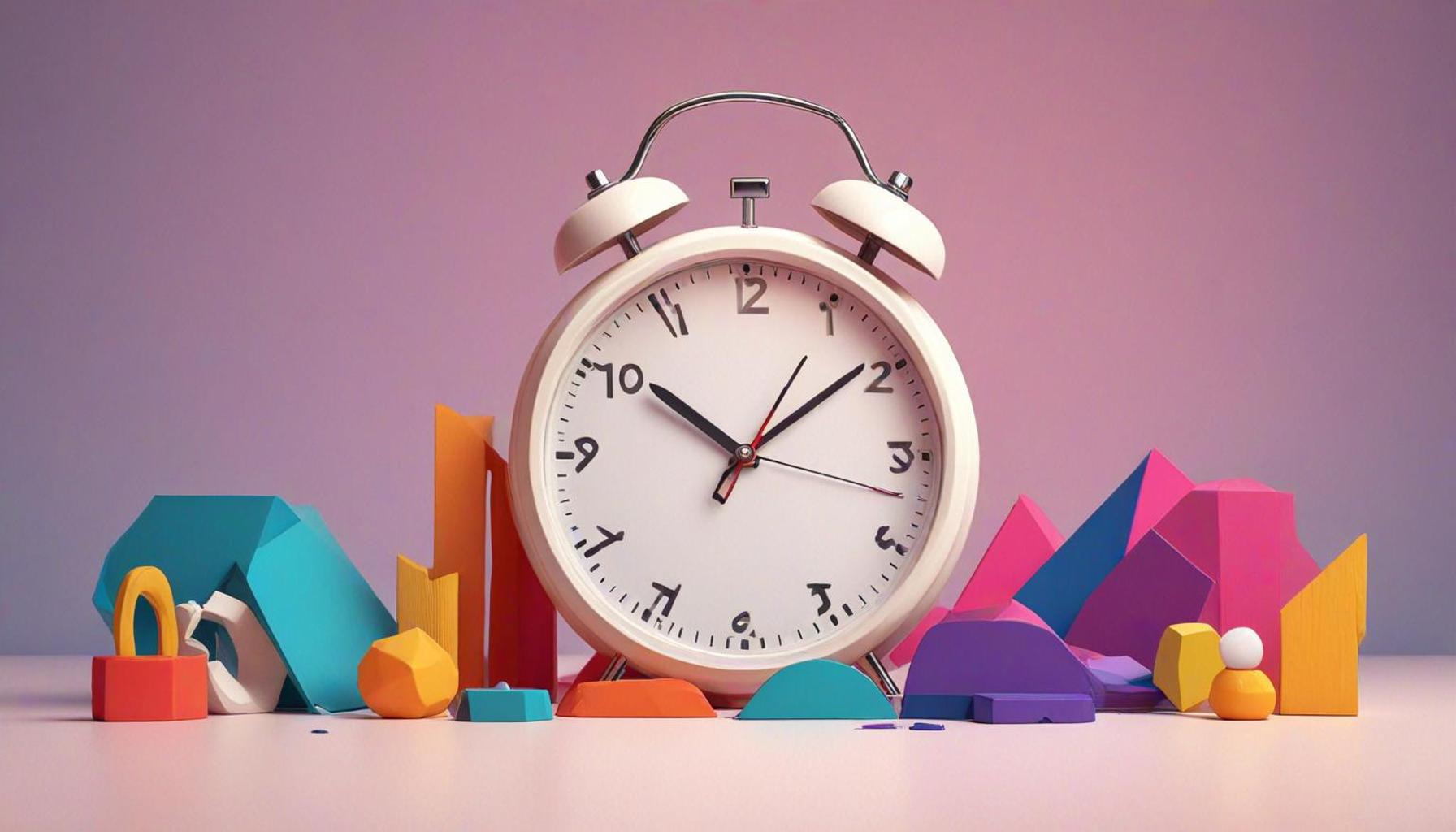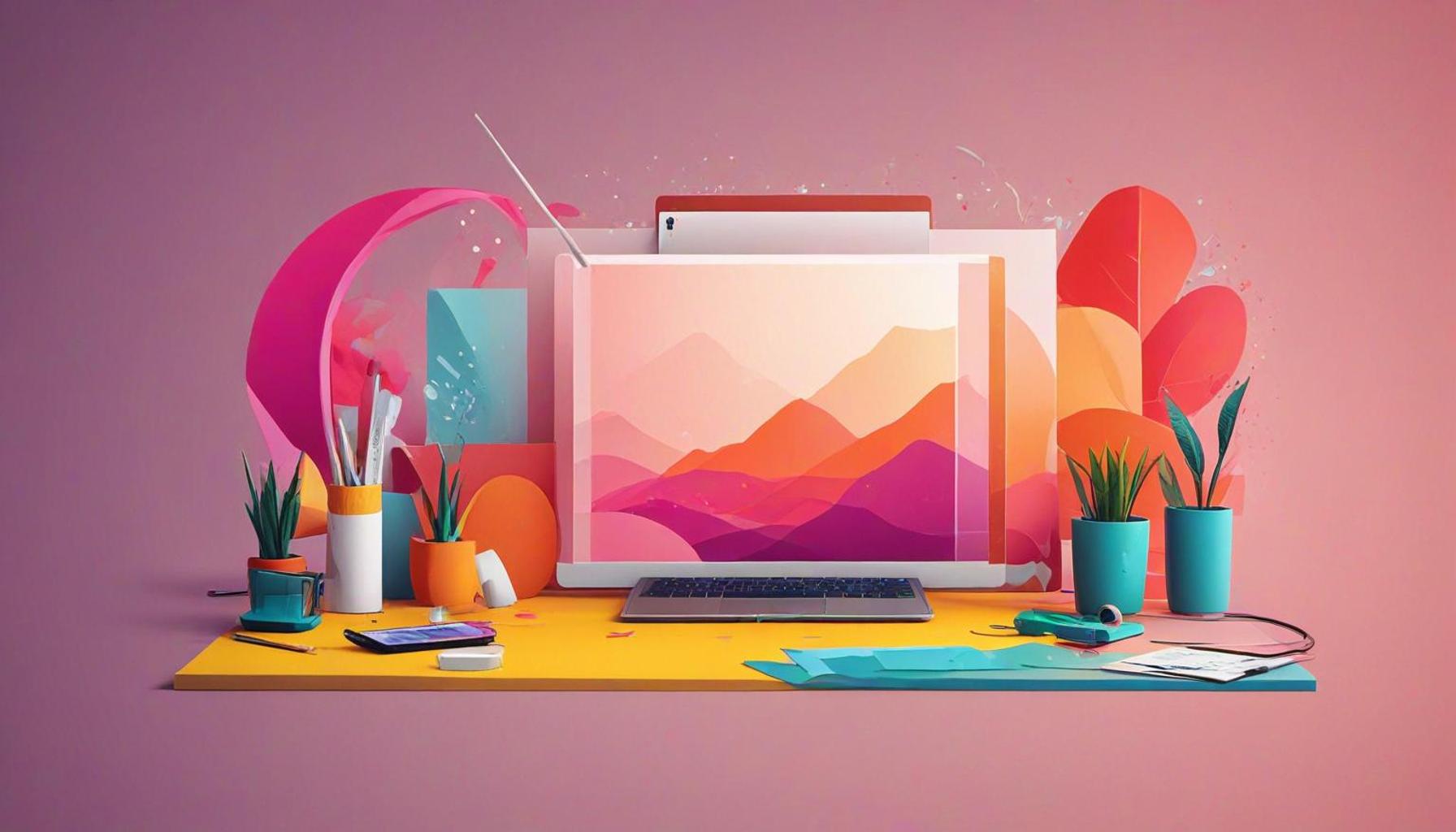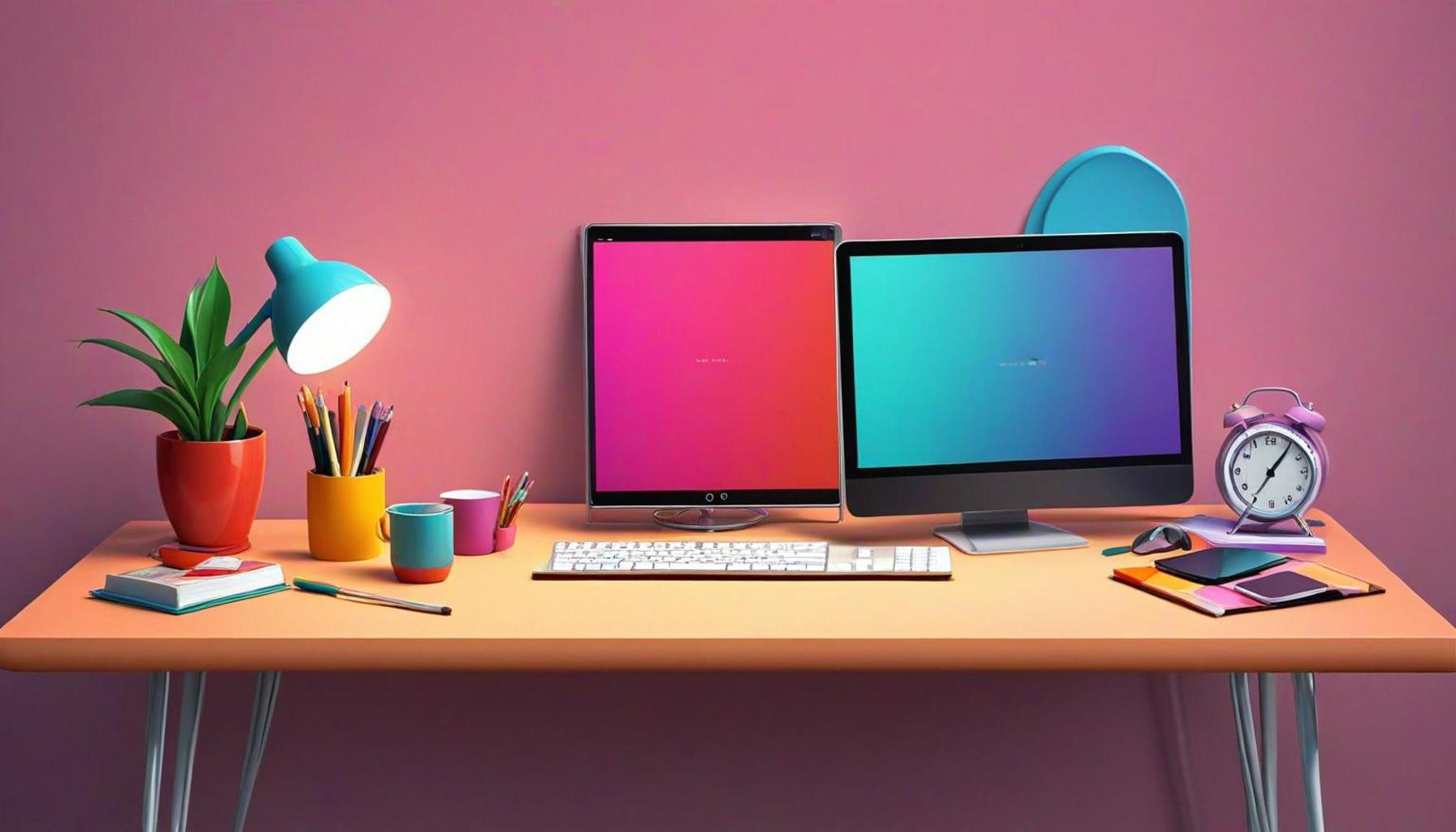Minimalism and Time Management: Creating a Distraction-Free Work Environment

Embracing Minimalism in Workspaces
In today’s fast-paced world, the clutter surrounding us often reflects the chaotic nature of our daily lives. This complexity can lead to overwhelm, making it challenging to maintain focus. Amidst this rush, minimalism surfaces as a powerful antidote, enabling individuals to streamline both their physical spaces and daily schedules. By prioritizing essential elements, minimalism allows for the cultivation of a distraction-free work environment that fosters enhanced focus and efficiency.
Creating a Minimalist Workspace
A minimalist workspace entails several key features designed to enhance productivity. Here are important aspects to consider:
- Decluttered surfaces: An organized desk devoid of non-essential items can create a serene atmosphere conducive to creativity. For instance, keeping only a plant or a photo that inspires you on your desk can improve your mental state during work hours.
- Organized digital spaces: Limiting desktop icons and maintaining systematic file management can significantly reduce visual noise. Tools like “Marie Kondo’s decluttering method” for digital spaces can be effective. By assessing which files spark joy or are necessary, you can streamline your digital life.
- Intentional design: Selecting furniture and decor that inspire creativity while serving functional purposes plays a vital role. Ergonomic chairs, standing desks, and soft, neutral color palettes can create an inviting and efficient workspace. Companies like IKEA and West Elm offer options that marry form and function beautifully.
Minimalism in Time Management
Time is perhaps our most valuable resource, and yet distractions are pervasive. Incorporating minimalist principles into time management can significantly transform productivity levels. Here are some proven tactics:
- Setting clear priorities: It’s essential to focus on what truly matters. Utilizing frameworks like the Eisenhower Matrix can help distinguish between urgent and important tasks, ensuring time is invested wisely.
- Establishing routines: Developing consistent habits can streamline tasks. For example, beginning each day with a dedicated work plan can help eliminate decision fatigue, allowing for smoother transitions between tasks.
- Using technology wisely: Limit notifications and digital interruptions. Tools such as “Do Not Disturb” modes on devices can assist in minimizing distractions, facilitating more sustained periods of concentration.
As we explore the intersection of minimalism and effective time management, you may uncover strategies that could reshape your work approach and enhance overall well-being. This journey towards simplicity not only aids in fostering productivity but can ultimately contribute to a more balanced and fulfilling professional life.
DISCOVER MORE: Click here to boost your productivity
Key Benefits of a Minimalist Approach
Adopting a minimalist approach in both workspace organization and time management can yield substantial benefits. These advantages extend beyond mere aesthetics, significantly impacting productivity, mental clarity, and overall well-being. By embracing minimalism, professionals can create an environment that not only facilitates focused work but also promotes a sense of calm amidst the daily hustle.
Enhancing Focus and Concentration
A clutter-free workspace has profound implications for maintaining focus. Research suggests that physical clutter can overwhelm our senses, making it difficult to concentrate on important tasks. For instance, a study published in the Journal of Neuroscience found that individuals working in tidy environments performed significantly better on cognitive tasks compared to those in messy spaces. By removing distractions, individuals can enjoy a marked improvement in their ability to engage deeply with their work. Here are some tangible benefits to enhancing focus through minimalism:
- Improved Cognitive Function: Studies indicate that a tidy environment can lead to better decision-making capabilities and higher problem-solving efficiency. For example, professionals in tech companies like Google and Facebook have adopted minimalist office designs to boost innovation and creativity among their teams.
- Increased Motivation: A clean and organized workspace fosters a sense of accomplishment, inspiring individuals to tackle assignments with renewed vigor. Consider the difference between working at a cluttered desk versus a neatly arranged one; the latter often ignites a proactive mindset.
- Reduced Stress Levels: Clutter often serves as a visual reminder of all tasks yet to be completed, creating a lingering sense of anxiety. Minimalism reduces this stress, allowing for a clear mental space to work effectively. Those who adopt minimalism report feeling more in control of their environment and, consequently, their stress levels decrease.
Cultivating Mindfulness in Time Management
Minimalism isn’t just about the physical space—it also extends to how we manage our time. In a society where multitasking is praised, minimalism advocates for a more focused and mindful approach to time allocation. The practice of minimalism encourages individuals to prioritize tasks and allocate their time wisely. Here are several strategies to consider:
- Single-tasking: Instead of juggling multiple tasks, concentrating on one at a time can lead to higher quality outputs and reduced errors. Studies have shown that single-tasking can improve productivity by up to 40% as it allows for deeper dives into each assignment.
- Time blocking: Allocating specific chunks of time for each task encourages dedication and minimizes the urge to fall back into reactive work modes. For example, time blocking is often practiced by successful entrepreneurs and productivity experts, who find that it allows them to manage their days efficiently while minimizing distractions.
- Regular reflection: Setting aside time to review accomplishments and reassess priorities helps in maintaining clarity in a hectic work environment. By regularly reflecting on tasks completed, individuals can reinvigorate their approach to future projects, ensuring they remain aligned with their long-term goals.
Incorporating minimalism into time management techniques propels individuals towards a more intentional and productive use of their time. As you explore these benefits, consider how integrating minimalism can redefine not just your workspace but also your approach to challenges and deadlines. By stripping away the excess, both in physical space and time investment, you can unlock a more rewarding and effective professional life.
| Advantages | Details |
|---|---|
| Increased Focus | Minimalism eliminates clutter, enabling clearer thoughts and enhanced concentration levels, critical for tackling complex projects. |
| Better Time Management | Structuring workspaces allows for streamlined workflows, reducing time spent searching for tools or information, ultimately fostering efficiency. |
| Reduced Stress | A distraction-free environment fosters a sense of calm, leading to lower stress levels and improved mental health for individuals who find solace in simplicity. |
| Enhanced Creativity | With fewer distractions, one’s mind is freer to explore innovative ideas and implement them more effectively in a minimalistic setting. |
Creating a workspace centered around minimalism not only declutters physical spaces but can profoundly influence your productivity and well-being. Adopting such environments can be a gateway to optimal performance in today’s fast-paced world. Integrating time management techniques within these minimalist approaches can further amplify their benefits, making them an invaluable asset to anyone striving to maximize productivity. Research has shown a direct correlation between a simplified environment and heightened focus, suggesting the potential for transformational changes in how individuals work. Exploring these intersections may spark new methods in balancing efficiency with peace of mind, urging further investigation into minimalism’s impact on professional success.
DIVE DEEPER: Click here to discover practical strategies
Implementing Minimalism in Your Work Routine
Transitioning to a minimalist approach in your work routine may appear daunting, but the process can yield transformative results. By taking strategic steps to revamp both your environment and approach to time management, you’ll open up new pathways toward productivity and creativity. To effectively implement minimalism, consider the following practical tips that encourage a less cluttered mind and workspace.
Decluttering Your Physical Space
The initial step towards minimalism is to declutter your physical surroundings. This not only makes your workspace aesthetically pleasing but also creates a mental reset. Start by evaluating all the items in your workspace. Ask yourself whether each item serves a defined purpose or brings you joy. If not, consider removing it. Here are some actionable methods for decluttering:
- The 30-Day Minimalism Game: This challenge encourages participants to eliminate one item on the first day, two items on the second, and so forth, ultimately leading to a significant reduction of clutter by the end of the month. Many have found their productivity sore once they’ve undertaken the challenge.
- Organized Zones: Designate specific zones in your workspace for different tasks—one for work-related materials, another for personal items. Keeping personal and professional items separate helps reduce distraction and allows easier access to what you need.
- Go Digital: In a tech-savvy world, consider digitizing important documents and notes. This transition not only saves physical space but also streamlines your organization process. Scanning papers and utilizing cloud services can make information retrieval faster and easier.
Leveraging Minimalism in Digital Workspaces
Minimalism extends its principles to your digital workspace as well—where hidden distractions may lie. Applying minimalism in digital platforms can drastically enhance focus and efficiency. Here’s how to achieve a distraction-free digital environment:
- Streamline Your Applications: Evaluate the apps and software you use daily. Uninstall unnecessary applications, and group similar tools to avoid overwhelming visuals. Focusing on a few essential tools saves time and keeps you concentrated on pressing tasks.
- Maintain a Clean Desktop: A chaotic desktop filled with files can detract from concentration. Establish a habit of organizing files into folders and keeping the desktop clear with only essential shortcuts available.
- Limit Notifications: Taming your digital notifications can significantly reduce distractions. Consider turning off notifications from non-essential apps during work hours to create a more focused atmosphere.
Creating a Distraction-Free Culture
As you embrace minimalism, consider the broader atmosphere in which you work. Whether you operate in a corporate setting or from home, fostering a culture around minimalism can help maintain productivity and efficiency. There are several ways to encourage this mindset among peers:
- Encouraging Open Spaces: Promoting open and collaborative areas can help reduce cluttered workstations. Design spaces that facilitate both solitude for focused tasks and areas conducive to collaboration.
- Weekly Clean-up Rituals: Establish a routine where teams engage in quick clean-up sessions at the end of each week, reinforcing the importance of maintaining a conducive working environment.
- Share Minimalism Resources: Foster discussions about productivity and minimalism by sharing books, articles, and podcasts. Engaging in conversations and learning from others can help to deepen the understanding of minimalism and its benefits.
By implementing these strategies, individuals and teams alike can steer towards a lifestyle enriched by minimalism, leading to heightened motivation, a sense of purpose in daily tasks, and a refreshing clarity of mind. In an increasingly chaotic world, creating a distraction-free work environment through minimalism could prove to be the ultimate catalyst for success.
DISCOVER MORE: Click here to transform your daily routine
Conclusion: The Lasting Impact of Minimalism on Time Management
In a fast-paced world increasingly bogged down by distractions, embracing minimalism in both physical and digital workspaces has emerged as a powerful antidote. By consciously selecting what we keep around us—be it objects on our desks or applications on our devices—we foster an environment that not only enhances focus but also encourages clarity of thought. The principles of minimalism serve as a reminder that less truly is more; a streamlined workspace leads to improved time management and cultivates a workspace dedicated to productivity and creativity.
Moreover, implementing a minimalist approach transcends individual effort, enriching workplace culture as a whole. Through initiatives such as encouraging open spaces, engaging in clean-up rituals, and sharing valuable resources, we nurture a collective commitment to minimizing distractions. As teams adopt its principles, the synergy from a distraction-free environment can lead to inspiring collaborations and increased efficiency.
Ultimately, the journey towards minimalism is not merely about reduction, but rather a means to redirect our attention toward what truly matters. As you embark on simplifying your environment and refining time management skills, remember that each step taken towards minimalism enhances your ability to perform at your best. It might just be the key to unlocking a more productive and fulfilling work life. So, whether you’re a remote worker, a corporate professional, or a freelancer, consider diving deeper into the world of minimalism—it could very well redefine your approach to work and life.


